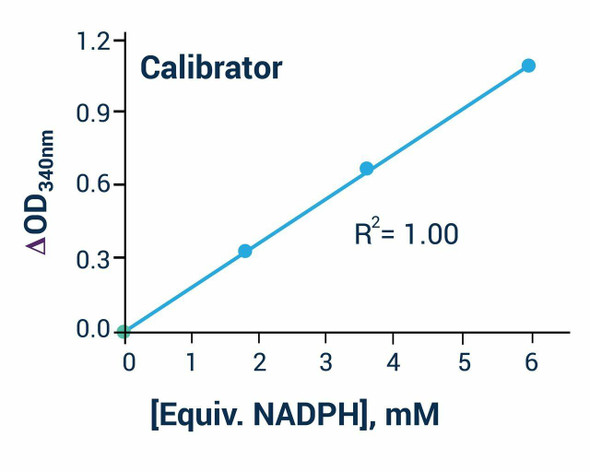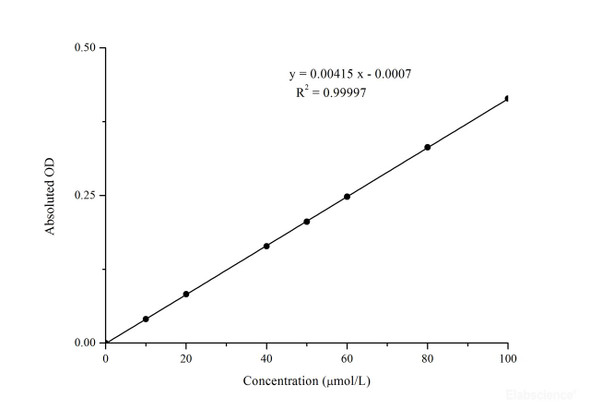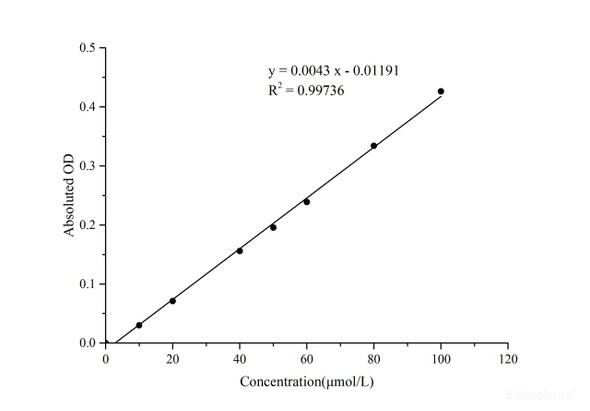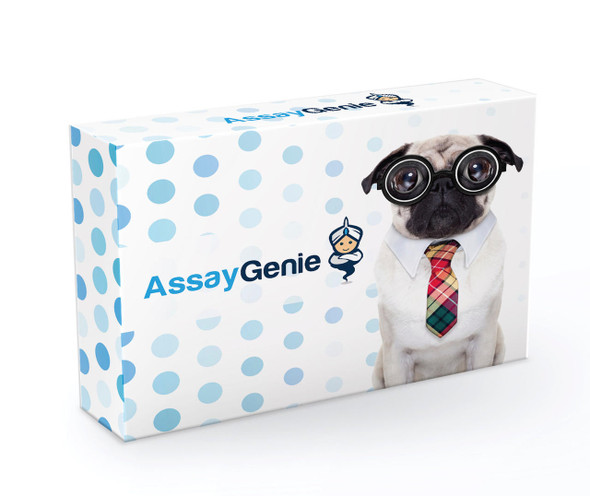

Glutathione Assay Kit - Information
Assay Genie's colorimetric Glutathione Assay Kit is designed to accurately measure reduced glutathione in biological samples. The improved 5,5'-dithiobis(2-nitrobenzoic acid (DTNB) method combines deproteination and detection (Reagent A) into one reagent. DTNB reacts with reduced glutathione to form a yellow product. The optical density, measured at 412 nm, is directly proportional to glutathione concentration in the sample. The optimized formulation has a long shelf life and is completely free of interference due to sample turbidity.
Applications
For quantitative determination of reduced glutathione (GSH) and evaluation of drug effects on glutathione metabolism
Glutathione Assay Kit - Key Features
- Sensitive and accurate. Linear detection range 0.4 - 100 in 96-well plate.
- Simple and convenient. The procedure involves mixing the DTNB Reagent with sample, removing protein precipitates for proteinaceous samples, adding a second Reagent and reading the optical density.
- Low interference. Amino acids and common buffers do not interfere.
Glutathione Assay Kit - Data Sheet | |
| Kit Includes | Reagent A: 30 mL Reagent B: 30 mL Calibrator: 10 mL (equivalent to 100 mM glutathione) |
| Kit Requires | Pipeting devices, centrifuge tube and table centrifuge. |
| Method of Detection | OD412nm |
| Detection Limit | 12 ug/dL (0.4 ) |
| Samples | Whole blood, plasma, serum, urine, tissue and cell extracts |
| Species | All |
| Protocol Length | 30 min |
| Size | 250 tests |
| Shelf Life | 12 months |
| Storage | Store all components at 4°C |
More Details
Glutathione is a tripeptide of glycine, glutamic acid and cysteine. In the red blood cell, the reduced form of glutathione is vital in maintaining hemoglobin in a reduced state and hence protecting the cells from oxidative damage. Glutathione is involved in detoxification of hydrogen peroxide through glutathione oxidase. Low levels of glutathione are found in deficiencies of key enzymes involved in glutathione metabolism, such as glucose-6-phosphate dehydrogenase, glutathione synthase and glutathione reductase. Simple, direct and automation-ready procedures for measuring reduced glutathione are becoming popular in Research and Drug Discovery.








